
Europa League Betting Guide
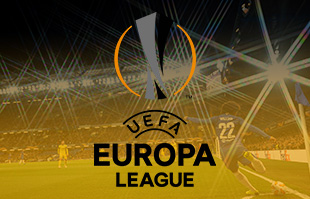
The Europa League is Europe’s second most prestigious club tournament, after the Champions League, and arguably the second most prominent club tournament in the world. While it may not receive as much attention as its sister tournament, it remains an incredibly entertaining event filled with plenty of value for bettors.
We’ll take a look at the history of the tournament along with some of its greatest moments as we introduce you to one of the most popular soccer events on the planet, a spectacle littered with opportunities for bettors everywhere.
What Is the Europa League?
The Tournament’s History
The Europa League originated from the Inter-Cities Fairs Cup, a smaller tournament which had gradually expanded and attracted the attention of UEFA, who seized the opportunity to take over the tournament and make it their own. The UEFA Cup was founded by UEFA in 1971, with Tottenham winning the inaugural edition of the contest, and it sought to serve as a second-tier event for teams that had failed to qualify for the Champions League.
Since its creation, the tournament has undergone a series of changes (the current rebranding having occurred in 2009), quickly becoming one of the most prominent soccer events in the world.
Who Qualifies?
Qualifying spots for the Europa League are based on UEFA coefficients, which measure and rank the strength of clubs and countries. This means that the top domestic leagues earn more spots than the lower leagues – the top five leagues leading the charge. Teams are typically selected by their placements in the league standings, but there are exceptions to this rule with a few countries also sending teams based on cup tournaments.
Dependent on the UEFA coefficient of the league and the placement in the league table, teams are either directly qualified into the Europa League or sent to the qualification play-offs. There are five different qualifying rounds, and teams enter at different rounds dependent on how they qualified. There are normally over 150 teams participating in the qualifying phase, and only 22 will qualify for the main draw.
Additionally, the 2009 rule changes introduced a new means by which to join the Europa League. Champions League teams who place third in their group (thus being eliminated) will head directly into the knockout stages of the Europa League, and these teams often end up winning the whole tournament.
Format – How Does It Work?
Following the qualification stages, the Europa League operates quite similarly to the Champions League. There are 12 groups of four teams each; each team will play every other team twice (home and away), and the top two teams in the group will end up advancing to the knockout stages.
Once the 24 teams advancing have been determined, an additional eight are added from the Champions League, forming the field of 32 that will battle it out for the title. From this point forward, there are four knockout rounds before the finals – each consisting of two legs. Opponents in these rounds are determined via random draws similar to the Champions League.
After four knockout rounds, the final – a one-leg, winner-takes-all game – is played at a predetermined site somewhere in Europe. The winner takes home the trophy, earns a spot in the UEFA Super Cup, and is automatically qualified for the subsequent year’s Champions League tournament.
The Top Teams – Which Clubs Have Dominated Their Competition?
Sevilla – Fantastic Five
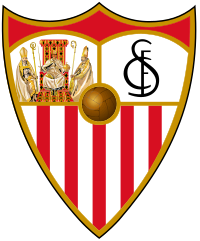
Sevilla is the most successful team in the history of the Europa League, having won five trophies. Perhaps even more remarkable is how they’ve earned their titles; all five of their victories have come after the turn of the millennium, and the Spanish side won five of the 11 tournaments contested between 2006 and 2016.
While Los Hispalenses have yet to hoist the Champions League trophy, they’ve cemented themselves in Europa League history, sporting some great players in the process, like Frederic Kanoute and Luis Fabiano.
Liverpool – Third Time’s the Charm
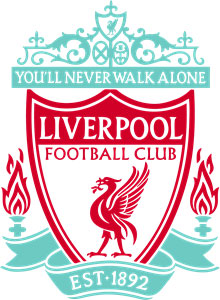
The Reds have won the Europa League three times, and they’re one of the few teams to have found success both in the Champions League and the Europa League, combining for a total of eight trophies between the two competitions. Liverpool enjoyed much of their success quite early on in the tournament, winning in 1973 and 1976, and their most recent win came in 2001.
Liverpool came tantalizingly close to a fourth trophy in 2016, but they fell in the final to Sevilla. Liverpool is England’s most successful club in the Europa League and the second most winningest club of all time.
Juventus and Inter – Impressive Italians
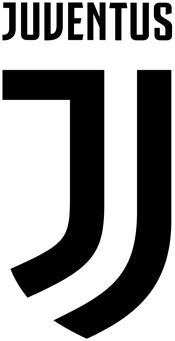
While the Europa League has historically been dominated by Spanish clubs, Juventus and Inter have enjoyed success as well, combining to win a total of six trophies (three each). They were especially commanding in the 1990s, the Italian teams winning half of the tournaments played during the decade.
The Nerazzurri and Bianconeri have since found success in the Champions League, and they remain Italy’s most successful teams in the tournament.
Atletico – A Recent Rampage
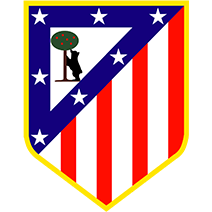
Atletico is the last team to win three Europa League titles. All three of their trophies have come after 2010, helping solidify Spain’s dominance since the turn of the millennium. They’ve sported some incredible players like Radamel Falcao and Antoine Griezmann, and they’ve become one of the tournament’s most successful clubs.
A Look into the Past – The Most Notable Europa League Moments
Fulham’s Magical Run – Their Unlikely Road to the Final
Fulham’s run to the final in 2010 is one of the Europa League’s greatest moments. The English club had barely qualified for the Europa League the previous season, finishing seventh in the Premier League, and their chances of making a deep run were close to none.
Fulham started off the tournament in the third qualifying round, meaning that they would have to play two more rounds before qualifying for the group stages. Fulham’s first match was quite simple, and they defeated Vetra 6-0 in a two-leg encounter.
Their final playoff match would prove to be a little more challenging. Playing against Russia’s Amkar Perm, Fulham started the first leg off strong and headed to Russia with a 3-1 victory. Fulham escaped from Russia despite a late goal from Perm, progressing to the group stage with a 3-2 win on aggregate.
Fulham was placed in Group E, one of the strongest groups in the tournament. To progress, they would have to challenge Roma, Basel, and CSKA Sofia. The Lilywhites never faltered, posting a 3-2-1 record throughout their six matches, winning both crucial matchups against Basel.
While Fulham had certainly impressed, no one expected them to make it very far in the group stages, especially after drawing a stiff opponent in Shakhtar Donetsk for their first round. Once again, Fulham defied the odds, coming away with a close 3-2 win after two legs.
Their next opponent would be their stiffest test yet; drawn against Juventus, the Bianconeri were heavy favorites to make it to the quarterfinals. After a 3-1 defeat at the Stadio Olimpico, Fulham’s legendary run seemed to be coming to an end. They weren’t ready to go just yet. Despite falling behind early at home, Fulham mounted one of the best comebacks in Europa League history, Dempsey’s late winner guiding Fulham to a 4-1 win and a spot in the quarterfinals.
Fulham had the attention of the world, and they capitalized on their momentum in the next two rounds, defeating Wolfsburg and Hamburg to make it to the Europa League finals. The German sides proved no match for the Lilywhites, and heading into the final against Atletico Madrid, they were hoping for yet another miracle.
Unfortunately for Fulham, their luck had run out. The two teams headed into extra time at one goal apiece, and Diego Forlan’s goal in the 116th minute would prove to be the decider, giving Atletico the trophy and leaving Fulham ever so close to glory. Nevertheless, Fulham’s run is one that will never be forgotten. They defied all odds and surpassed everyone’s expectations en route to the final, making for the greatest underdog story in the history of the tournament.
A Goal to Be Remembered – Lamela’s Rabona
The score was 1-0. Tottenham was facing off against Asteras Tripolis, and it looked like it would be a comfortable win with few surprises. Tottenham would win the game convincingly, but their victory was not the highlight of the encounter.
In the 29th minute, Adebayor had the ball on the outside of the box. Looking for a pass, he quickly found himself surrounded by three defenders. A series of deflections and a failed clearance left the ball right at Erik Lamela’s feet. The ball being on the right side of the Argentinian, the natural course of action would be to attempt a shot with his weak foot.
Lamela did no such thing. With the ball rolling towards him, Lamela attempted a Rabona, wrapping his stronger left leg around his right and sending it towards goal. The finish was perfect; the ball sailed through the air into the top right corner, leaving fans and Lamela himself speechless.
It was an outrageous finish, a reckless decision that led to one of the most improbable goals in Europa League history. Lamela would score another in the 66th minute, but his first goal would go down in footballing fame.
Flying Falcao – The Colombian’s Heroics
Radamel Falcao is one of Colombia’s greatest players ever, and he’s the national team’s all-time leading goalscorer. Despite his international accomplishments, the highlight of his career came for his clubs as he guided Porto and Atletico Madrid to Europa League triumphs in consecutive years.
In the 2010-2011 Europa League, Falcao found himself at Porto. The Portuguese club looked unbeatable throughout the group stages, and they emerged atop Group L, drawing Sevilla in the round of 32. After a close win against the Spanish side, Porto followed it up with a convincing 3-1 victory over CSKA Moscow.
Falcao’s brilliance would begin in the quarterfinals. The forward scored a hat trick in the first leg against Spartak Moscow, adding another in the second leg to bring his tally up to four. The result was a blowout; Porto won the matchup 10-3, and they looked like the favorites to win the title.
The semi-finals were no different. Yet again, Falcao shined in the first leg against Villareal, scoring four goals to put his team in a great position to make the final. He scored one more away at Villareal, and his title as the tournament’s top goalscorer was all but guaranteed.
Falcao would score the winner in the final against Braga, a clinical header in the 44th minute helping guide Porto to their second Europa League trophy. The Colombian had scored 17 goals throughout the entirety of the tournament, breaking Klinsmann’s previous record and cementing himself as one of the world’s best strikers.
After a record transfer to Atletico, Falcao found himself in the Europa League once again. They were impenetrable. After topping their group, Atletico went undefeated throughout the whole of the knockout stages, winning all nine legs, both home and away, and coming away with another Europa League trophy. Falcao proved instrumental to their victory, and he finished as the tournament’s top goalscorer for the second year in a row, scoring a brace in their final encounter against Athletic Bilbao.
Radamel Falcao had made his mark on the tournament; his historic 2011 and 2012 tournaments will go down in history. The Colombian was impossible to stop, embarking on one of the most prolific scoring runs in footballing history.
Three Straight – Sevilla’s Domination
Between 2014 and 2016, Sevilla won all three Europa League tournaments, cementing their legacy as the most successful Europa League club in history. Their first victory came against Benfica, a tight contest that was decided via a penalty shootout. Their second came against an unlikely opponent; facing off against Dnipro, a Ukrainian side, Sevilla took home their fourth trophy with a 3-2 win. Their third win was especially impressive, and they posted a convincing 3-1 victory over a solid Liverpool side.
While Sevilla disappointed in the Champions League, they made up for it in the Europa League, and their treble was the first in the history of the tournament. The Spanish side was unbeatable over that three-year period, and their success makes them the only side eligible to wear the Europa League multiple winner badge on their jersey, a testament to their dominance over the competition.
Types of Bets – Outrights, Prop Bets, and More!
Moneyline – Simple and Classic
These are the simplest of soccer bets. Simply put, a moneyline bet allows you to place a bet on the outcome of a match – a home win, an away win, or a draw. Moneyline bets are available on every single Europa League match, and they’re incredibly easy to understand and place bets on.
While they are simple, moneyline bets can often offer incredible value. If you are an expert on a particular team, or you feel that a certain outcome is incredibly undervalued, moneyline bets should be your preferred choice.
Futures – Are You an Oracle?
Futures bet, also called outrights, offer bettors the opportunity to bet on the future outcomes of events. Whereas moneyline bets occur in the current round, futures allow you to bet on the winner of the entire tournament. Since a variety of matches must be contested before determining the winner, futures offer better odds than simple moneyline bets, even for the top teams.
If you’re looking for a riskier bet that promises a greater reward, futures are a great option. Think you can predict the future?
Handicaps – Will It Be a Blowout?
Whereas moneyline bets allow you to bet on the outcome of a match, handicaps offer the same thing but with a spread. Handicap bets allow you to find value even in incredibly lopsided matchups; depending on how one-sided the game is, a large handicap could still present you with great odds.
There are two main types of handicaps – the full ball handicap and the half ball handicap. Full ball handicaps are offered in integers (-1, -2, etc.) while half ball handicaps are offered in decimal form (-0.5, -1.5, -2.5, etc.). The way in which they operate is very similar. Very simply, you take the score of the matchup and add goals based on the bet.
For example, if Barcelona is favored at -2 over Real Madrid, and the final score ends 3-0, the handicapped score results as 3-2. As you can see, full ball handicaps can result in draws; if this happens, the full bet is refunded. Half-ball handicaps do not allow for draws, and as such, they can be slightly riskier.
Handicap bets can be incredibly valuable, offering great value when you think that the matchup will be lopsided. If you think there will be a large margin of victory in a certain game, handicaps are for you.
Over/Under – Defense vs. Offense
Over/under bets are placed on the number of goals scored in a match. You can either bet on the over – if you believe that the total goal tally will exceed the bet’s amount, or the under – if you believe fewer goals will be scored than the bet. Over/under bets are placed on decimal goal tallies (1.5, 2.5, 3.5, etc.). For example, betting on over 2.5 means you expect three or more goals to be scored. Betting on the under means you expect two or fewer goals to be scored.
The over/under bet doesn’t require you to know how the match will go. Rather, you’ll have to examine the two teams in question. Do both teams have great attacks? Do they struggle on defense? How many clean sheets have they earned? Will it be a close game or a lopsided affair? All these questions need to be taken into account when determining the flow of the game.
Player-Specific Bets and Other Obscure Bets – A Fan’s Dream
While the previous bets we covered are the main ones you’ll find with your online sportsbook, there are plenty of other opportunities for betting as well. Player-specific bets are one of these options; if you think a player is going to score or assist, you can bet on them. When players are in form, particularly strikers, they tend to continue on their hot streaks, and this can give player bets huge upside.
Other bets include betting on the number of corners, fouls, possession, and just about anything you can think of. The world of soccer betting is incredibly large, and there is a vast array of opportunities for the avid fan and even the casual viewer.
Our Favorite Betting Sites – Getting in on the Action
With the different types of bets in mind and plenty of value to go around, here are the soccer betting sites we recommend. The Europa League offers incredibly enticing bets, and there are often special offers that revolve around the tournament. These sites allow you quick and easy access to the action, and they are sure to suit your every need as a bettor.
| RANK | GAMBLING SITE | BONUS | PRODUCT OFFERS | REVIEW | VISIT |
|---|---|---|---|---|---|
| 1 |  |
€30 | 



|
READ REVIEW | VISIT SITE |
| 2 |  |
€200 | 



|
READ REVIEW | VISIT SITE |
| 3 |  |
Get €30 | 



|
READ REVIEW | VISIT SITE |
Conclusion
As you can see, the Europa League has a deep and rich history. It is one of soccer’s premier events, and it’s only gotten better and more popular since its introduction in 1971. It provides plenty of entertainment and fun for audiences all over the world and an opportunity for European teams to prove themselves on the international level.
In addition to its entertainment value, the Europa League is a great place to find betting value. There are both obscure matchups and high-powered encounters, goals abounding and rock-solid defense. The Europa League is one of the most underrated events in sports, and if you know where to look, it can make you a lot of money, too.